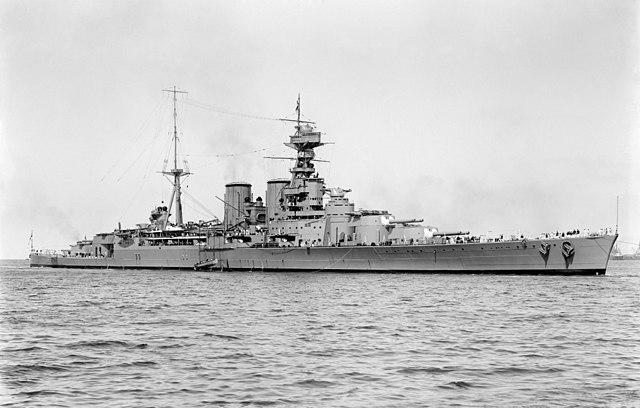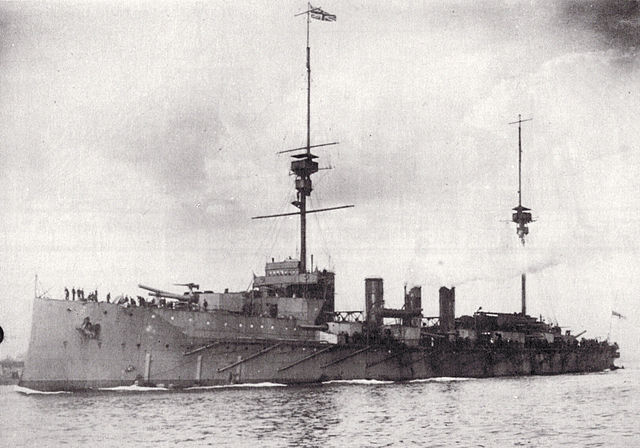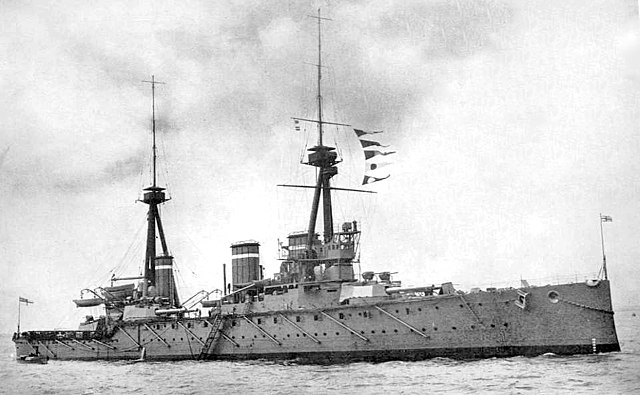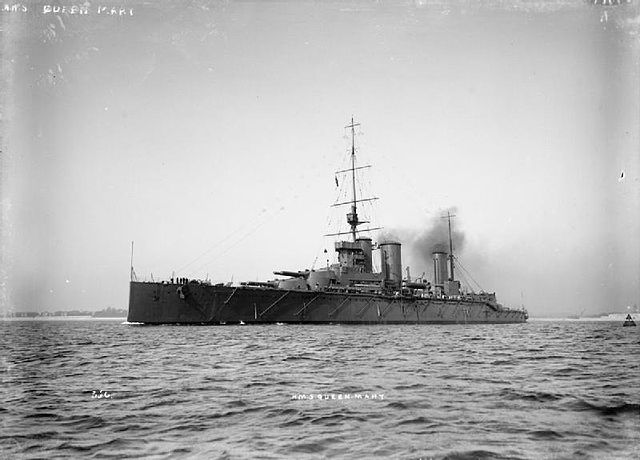Kronshtadt-class battlecruiser
The Kronshtadt-class battlecruisers, with the Soviet designation as Project 69 heavy cruisers, were ordered for the Soviet Navy in the late 1930s. Two ships were started but none were completed due to World War II. These ships had a complex and prolonged design process which was hampered by constantly changing requirements and the Great Purge in 1937.
Luftwaffe reconnaissance photo of Kronshtadt under construction in late 1941; her stern section is in the right midsection of the photograph
Luftwaffe aerial reconnaissance photo of Kronstadt under construction, 1 June 1942
The battlecruiser was a type of capital ship of the first half of the 20th century. These were similar in displacement, armament and cost to battleships, but differed in form and balance of attributes. Battlecruisers typically had thinner armour and a somewhat lighter main gun battery than contemporary battleships, installed on a longer hull with much higher engine power in order to attain greater speeds. The first battlecruisers were designed in the United Kingdom, as a development of the armoured cruiser, at the same time as the dreadnought succeeded the pre-dreadnought battleship. The goal of the design was to outrun any ship with similar armament, and chase down any ship with lesser armament; they were intended to hunt down slower, older armoured cruisers and destroy them with heavy gunfire while avoiding combat with the more powerful but slower battleships. However, as more and more battlecruisers were built, they were increasingly used alongside the better-protected battleships.

HMS Hood, the largest battlecruiser ever built, in Australia on 17 March 1924
HMS Shannon, a Minotaur-class armoured cruiser
Invincible, Britain's first battlecruiser
HMS Queen Mary, the last battlecruiser built before World War I






